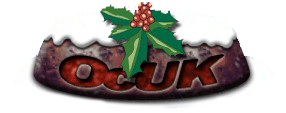What I'm wanting to achieve is a script that sets the following permissions on the root of a share:
Domain Admin: Full control, folders, subfolders and files
Domain Users: This folder only, read and traverse.
Once the script is set, I want it to match the user folders (in the same format as their AD user account) and give them full control over their own folder, subfolders and files.
Unfortunately I'm having a number of issues (mostly around the set-acl section). Can someone help please?
Domain Admin: Full control, folders, subfolders and files
Domain Users: This folder only, read and traverse.
Once the script is set, I want it to match the user folders (in the same format as their AD user account) and give them full control over their own folder, subfolders and files.
Unfortunately I'm having a number of issues (mostly around the set-acl section). Can someone help please?
Code:
#Fix Home folder Permissions v1.0
#-------------------Editable Variables----------------------#
# Where is the root of the home drives?
$homeDrivesDir=""
# Report only? ($false = fix problems)
$reportMode = $false
# Print all valid directories?
$verbose = $false
# What domain are your users in?
$domainName = ""
$homeFolders = Get-ChildItem $homeDrivesDir | Where {$_.psIsContainer -eq $true}
#--------------------User Inputs-----------------------------#
$homeDrivesDir = Read-Host "Please type the name of the share, e.g \\SERVER\SHARE\. Please include the trailing \"
$domainName = Read-Host "Please enter the domain name"
#------------------Share Permissions-------------------------#
# Put the permissions of the share into a variable
$homeDrivesDiracl = Get-Acl $homeDrivesDir
#Removes all access to share
$homeDrivesDiracl.Access | %{$homeDrivesDiracl.RemoveAccessRule($_)}
#Puts Domain admin permissions into a variable
Write-Host "Setting permissions for" $homeDrivesDir "Share" -foregroundcolor white -backgroundcolor red
# Add the domain admin into the $username variable
$username = "domain\domain admins"
# Grant the user full control
$accessLevel = "FullControl"
# Should permissions be inherited from above?
$inheritanceFlags = "ContainerInherit, ObjectInherit"
# Should permissions propagate to below?
$propagationFlags = "None"
# Is this an Allow/Deny entry?
$accessControlType = "Allow"
$accessRule = New-Object System.Security.AccessControl.FileSystemAccessRule($username,$accessLevel,$inheritanceFlags,$propagationFlags,$accessControlType)
#Applies above variable to top-level folder
$homeDrivesDiracl.SetAccessRule($accessRule)
Set-Acl -path $homeDrivesDir $homeDrivesDiracl
# Add the domain users into the $username variable
$username = "domain\domain users"
# Grant the user full control
$accessLevel = "ReadandExecute"
# Should permissions be inherited from above?
$inheritanceFlags = "None, None"
# Should permissions propagate to below?
$propagationFlags = "None"
# Is this an Allow/Deny entry?
$accessControlType = "Allow"
$accessRule = New-Object System.Security.AccessControl.FileSystemAccessRule($username,$accessLevel,$inheritanceFlags,$propagationFlags,$accessControlType)
#Applies above variable to top-level folder
$homeDrivesDiracl.SetAccessRule($accessRule)
Set-Acl -path $homeDrivesDir $homeDrivesDiracl
#------------------Background Guff---------------------------#
# Save the current working directory before we change it (purely for convenience)
pushd .
# Change to the location of the home drives
set-location $homeDrivesDir
# Warn the user if we will be fixing or just reporting on problems
write-host ""
#-----------------Reports or Fix Mode------------------------#
if ($reportMode) {
Write-Host "Report mode is on. Not fixing problems"
} else {
Write-Host "Report mode is off. Will fix problems"
}
write-host ""
# Initialise a few counter variables. Only useful for multiple executions from the same session
$goodPermissions = $unfixablePermissions = $fixedPermissions = $badPermissions = 0
$failedFolders = @()
# For every folder in the $homeDrivesDir folder
foreach($homeFolder in $homeFolders) {
# Put the current ACL in a variable
$Acl = Get-Acl $homeFolder
# create a permission mask in the form of DOMAIN\Username where Username=foldername
# (adjust as necessary if your home folders are not exactly your usernames)
$compareString = "*" + $domainName + "\" + $homeFolder.Name + " Allow FullControl*"
# if the permission mask is in the ACL
if ($Acl.AccessToString -like $compareString) {
# everything's good, increment the counter and move on.
if ($verbose) {Write-Host "Permissions are valid for" $homeFolder.Name -backgroundcolor green -foregroundcolor white}
$goodPermissions += 1
} else {
# Permissions are invalid, either fix or report
# increment the number of permissions needing repair
$badPermissions += 1
# if we're in report mode
if ($reportMode -eq $true) {
# reportmode is on, don't do anything
Write-Host "Permissions not valid for" $homeFolder.Name -backgroundcolor red -foregroundcolor white
} else {
# reportmode is off, fix the permissions
Write-Host "Setting permissions for" $homeFolder.Name -foregroundcolor white -backgroundcolor red
# Add the user in format DOMAIN\Username
$username = $domainName + "\" + $homeFolder.Name
# Grant the user full control
$accessLevel = "FullControl"
# Should permissions be inherited from above?
$inheritanceFlags = "ContainerInherit, ObjectInherit"
# Should permissions propagate to below?
$propagationFlags = "None"
# Is this an Allow/Deny entry?
$accessControlType = "Allow"
try {
# Create the Access Rule
$accessRule = New-Object System.Security.AccessControl.FileSystemAccessRule($username,$accessLevel,$inheritanceFlags,$propagationFlags,$accessControlType)
# Attempt to apply the access rule to the ACL
$Acl.SetAccessRule($accessRule)
Set-Acl -path $homeFolder $Acl
# if it hasn't errored out by now, increment the counter
$fixedPermissions += 1
} catch {
# It failed!
# Increment the fail count
$unfixablePermissions += 1
# and add the folder to the list of failed folders
$failedFolders += $homeFolder
}
} #/if
} #/if
} #/foreach
# Print out a summary
Write-Host ""
Write-Host $goodPermissions "permissions correctly applied"
Write-Host $badPermissions "permissions needing repair"
if ($reportMode -eq $false) {Write-Host $fixedPermissions "permissions fixed"}
if ($unfixablePermissions -gt 0) {
Write-Host $unfixablePermissions "ACLs could not be repaired."
foreach ($folder in $failedFolders) {Write-Host " -" $folder}
}
# Cleanup
popd
Last edited:

